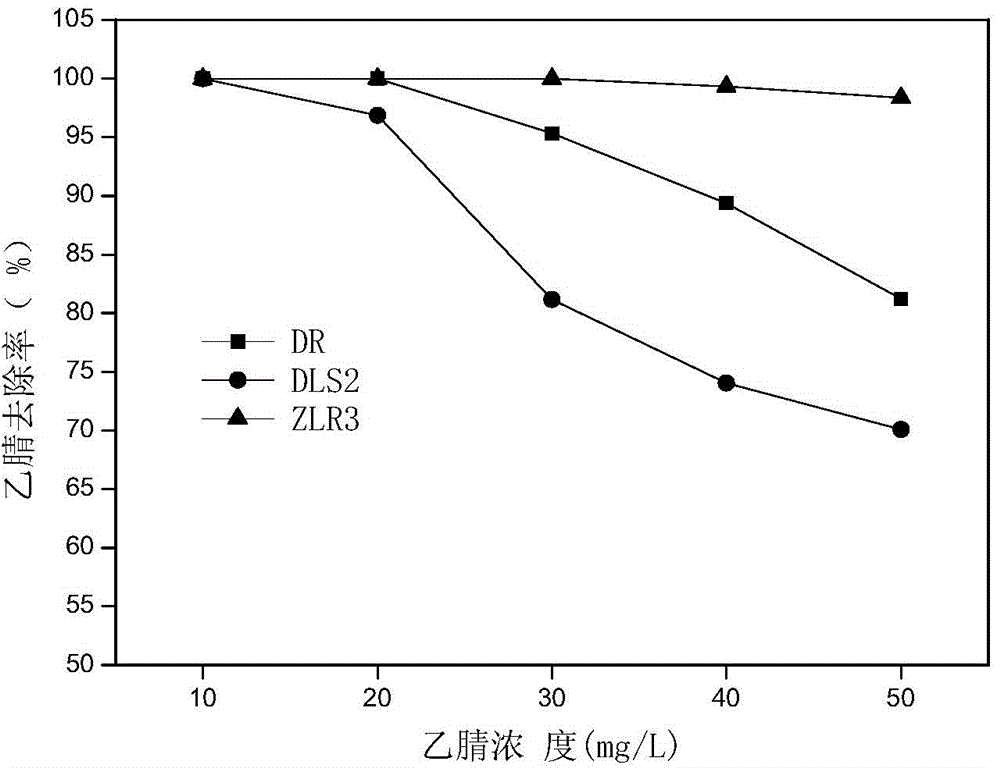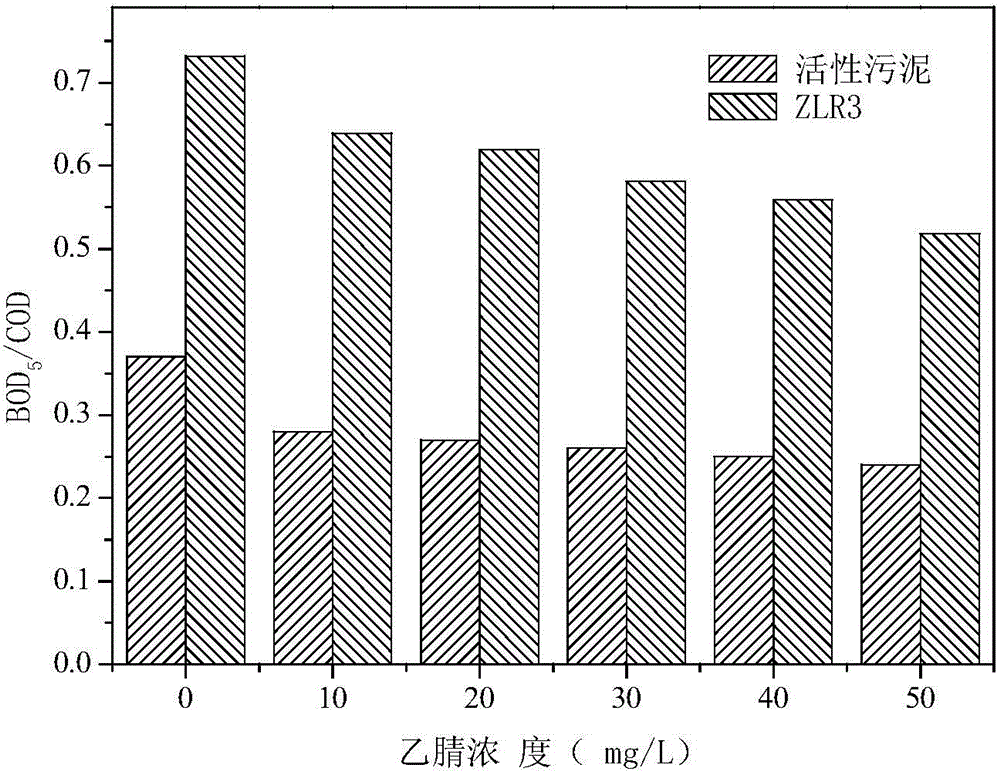Shewanella putrefaciens capable of effectively degrading acetonitrile and application of Shewanella putrefaciens
A technology capable of degrading Shewanella putrefaciens, applied in bacteria, microbial-based methods, water/sludge/sewage treatment, etc., can solve the problems of acetonitrile compatibility research and has not yet been formed, and achieve strong adaptability , good biological stability
- Summary
- Abstract
- Description
- Claims
- Application Information
AI Technical Summary
Problems solved by technology
Method used
Image
Examples
Embodiment 1
[0038] Embodiment 1, the screening of efficient bacteria
[0039]The specific components and contents of the inorganic salt medium used in this example are: sodium chloride 1g / L, ammonium nitrate 1.5g / L, potassium dihydrogen phosphate 0.5g / L, dipotassium hydrogen phosphate 0.5g / L, heptahydrate Ferrous sulfate 0.02g / L, magnesium sulfate 0.1g / L, pH=7.2, the concentration of acetonitrile in the culture medium is specifically shown in each embodiment; the purity of the acetonitrile used is chromatographically pure and in solution state.
[0040] The activated sludge was taken from the outlet of the O pool of the activated sludge method treatment process in the sewage workshop of PetroChina Dalian Petrochemical Company, and the highly efficient bacteria degrading acetonitrile in the sewage of petrochemical enterprises were separated and purified by a combination of liquid enrichment culture method and dilution plate coating method . Specific steps are as follows:
[0041] (1) Add...
Embodiment 2
[0054] Embodiment 2, ZLR3 are to the degradation characteristic of acetonitrile
[0055] The sewage samples and activated sludge samples used in various experiments in this example were all taken from the sewage treatment workshop of Dalian Petrochemical Company, and acetonitrile was added to the sewage to prepare acetonitrile sewage with different concentrations.
[0056] The components and contents of the LB medium used in this example are: yeast powder 5g / L, peptone 10g / L, sodium chloride 10g / L, pH=7.2. After culturing for 18 hours under min conditions, it was used as the seed solution in the following experiments in this example (the bacteria solutions used in this example and subsequent examples are the seed solutions of each bacterium).
[0057] Experiment 1, the degradation rate of acetonitrile
[0058] Inoculate the seed solution of the strain ZLR3, DR, DLS3 screened in Example 1 to the inorganic salt liquid medium containing different concentrations of acetonitrile w...
Embodiment 3
[0075] Compatibility of embodiment 3, ZLR3 and activated sludge
[0076] Mix the activated sludge, ZLR3 seed solution and DR bacteria seed solution at a volume ratio of 1:3, 1:2, 1:1, 2:1, and 3:1, and then inoculate the mixed solution at a volume ratio of 5%. Inoculate petrochemical sewage with acetonitrile concentration of 50mg / L, and measure the COD removal rate of sewage. The preparation of the seed liquid in this embodiment is the same as that in Example 2.
[0077] The result is as Figure 7 As shown, the COD removal rate in acetonitrile wastewater is the highest after mixing activated sludge and ZLR3 seed solution at a ratio of 1:3, and the overall COD removal rate after mixing ZLR3 with activated sludge is higher than that of DR combined with activated sludge The results showed that ZLR3 was significantly better than other strains screened in this study in improving the COD removal efficiency of petrochemical wastewater containing acetonitrile.
PUM
 Login to View More
Login to View More Abstract
Description
Claims
Application Information
 Login to View More
Login to View More - R&D
- Intellectual Property
- Life Sciences
- Materials
- Tech Scout
- Unparalleled Data Quality
- Higher Quality Content
- 60% Fewer Hallucinations
Browse by: Latest US Patents, China's latest patents, Technical Efficacy Thesaurus, Application Domain, Technology Topic, Popular Technical Reports.
© 2025 PatSnap. All rights reserved.Legal|Privacy policy|Modern Slavery Act Transparency Statement|Sitemap|About US| Contact US: help@patsnap.com



